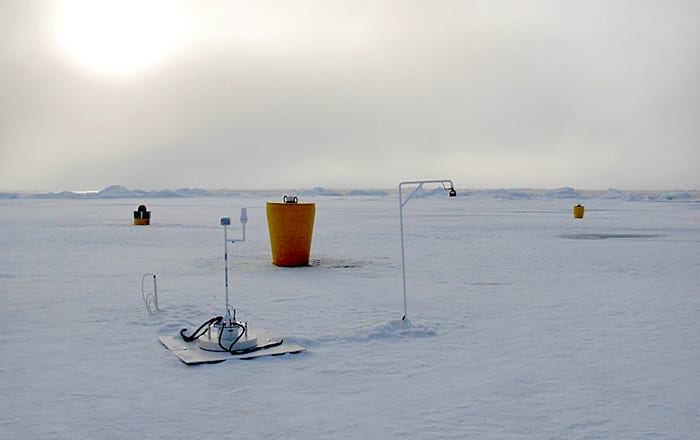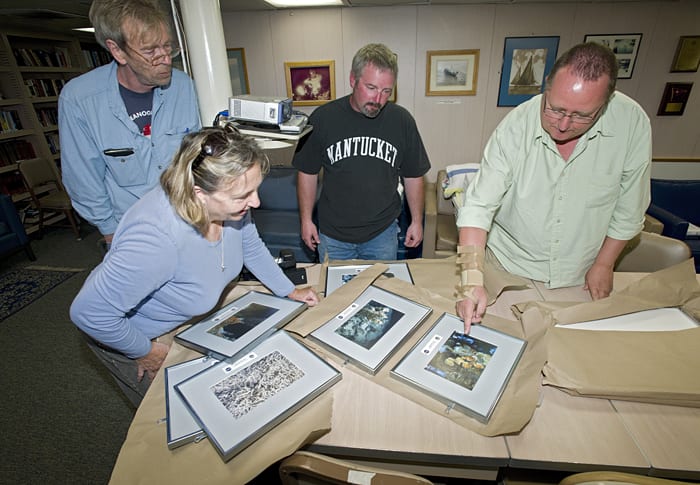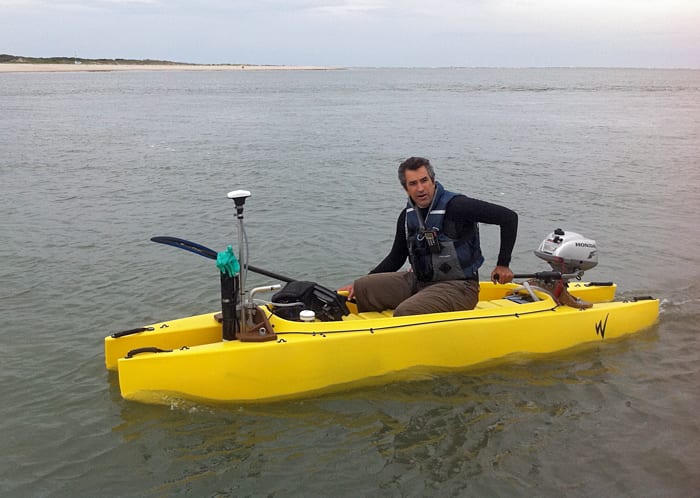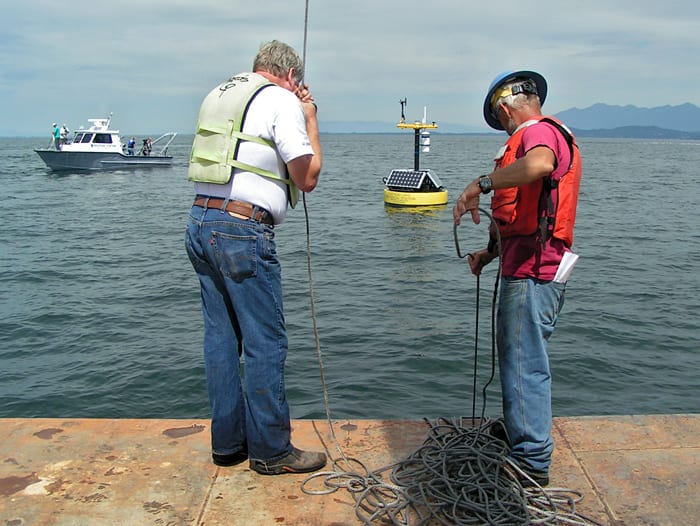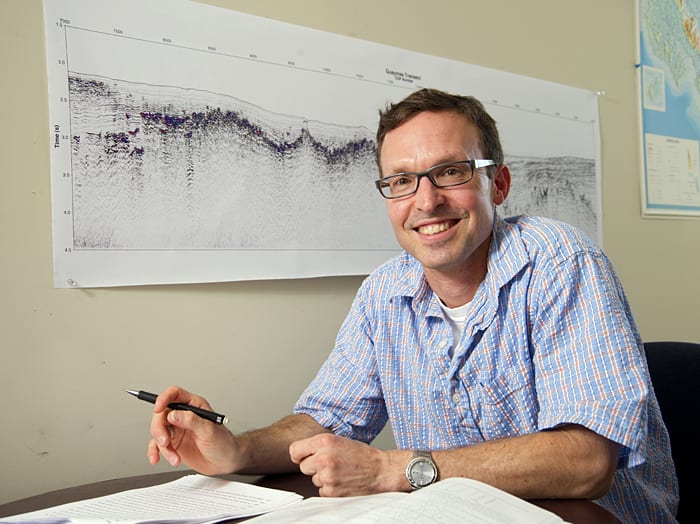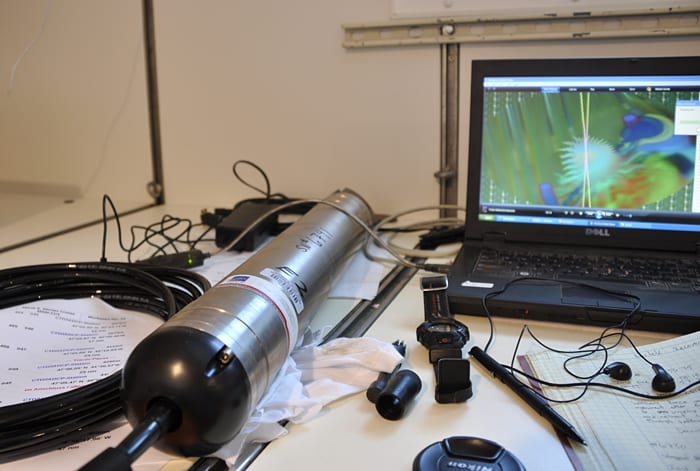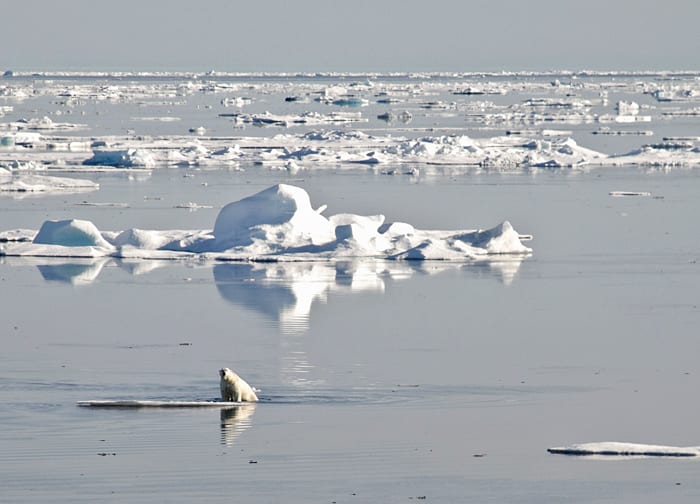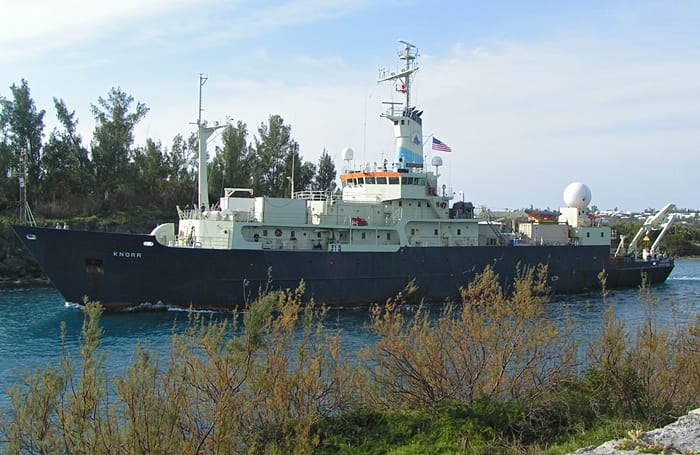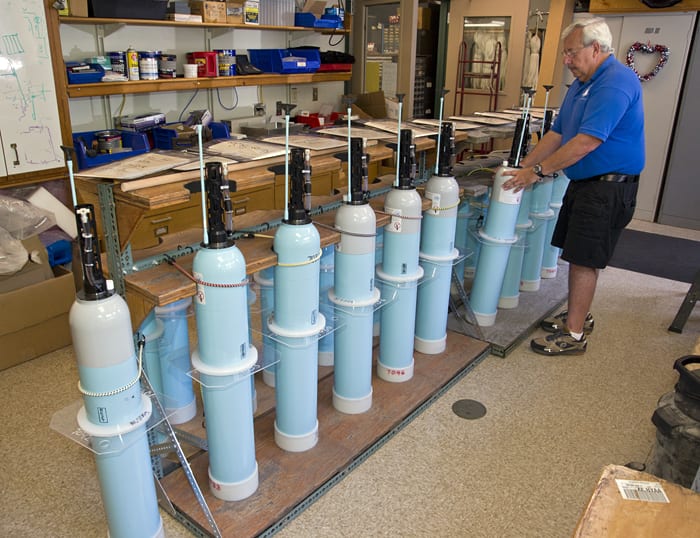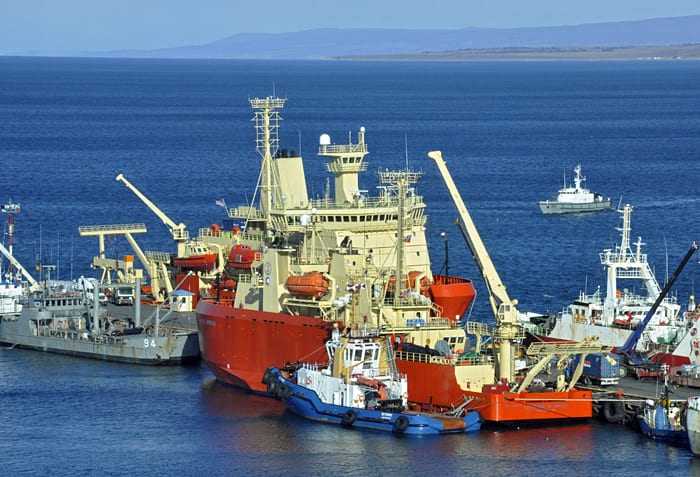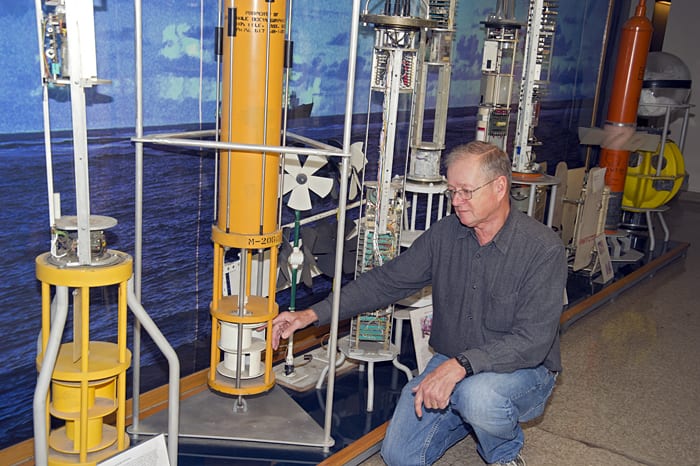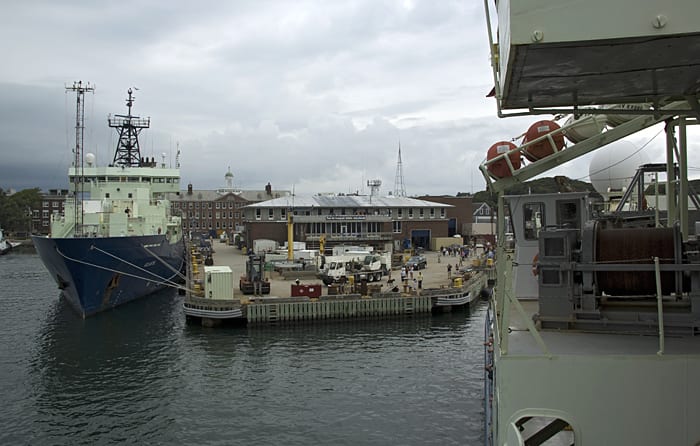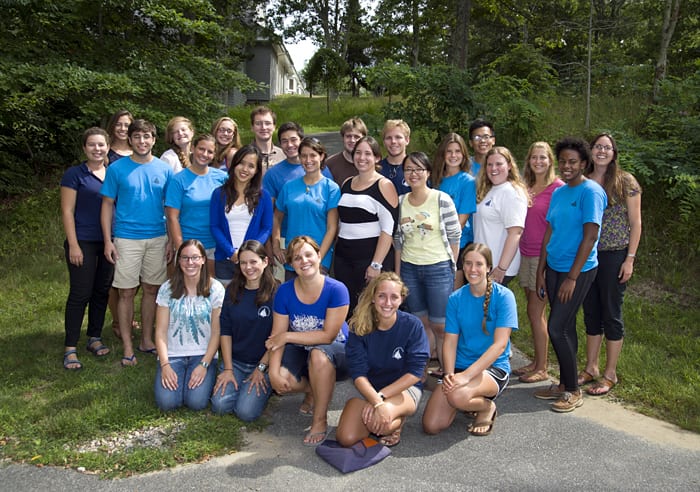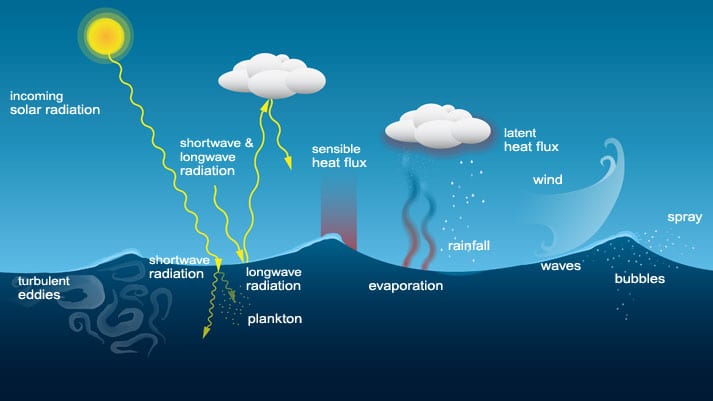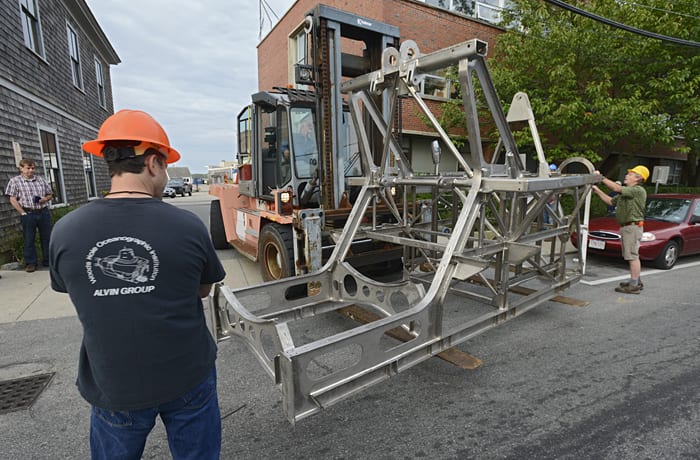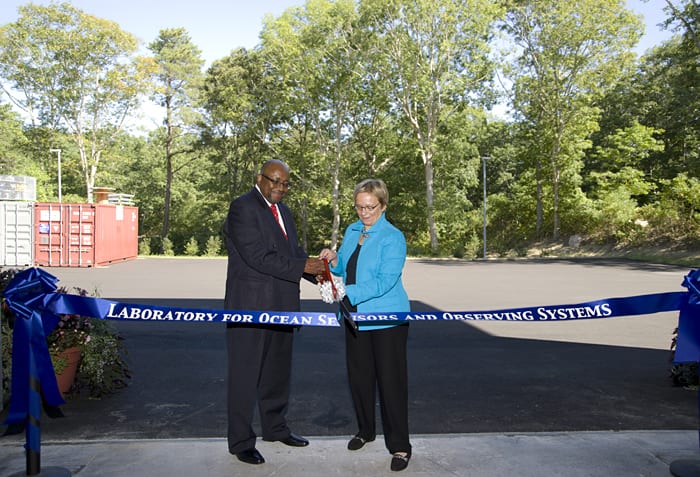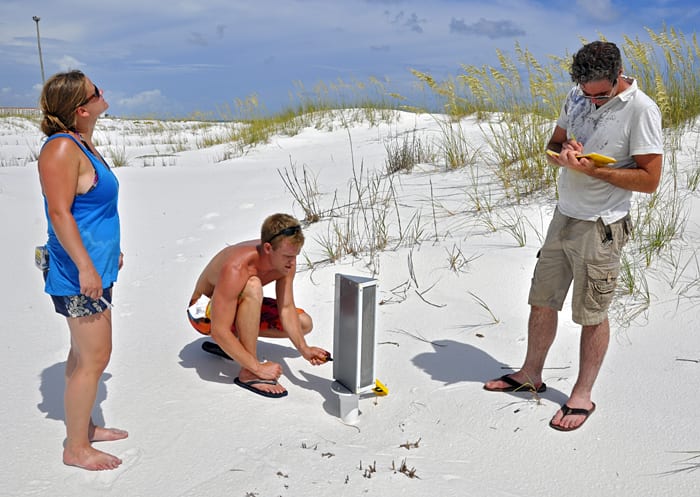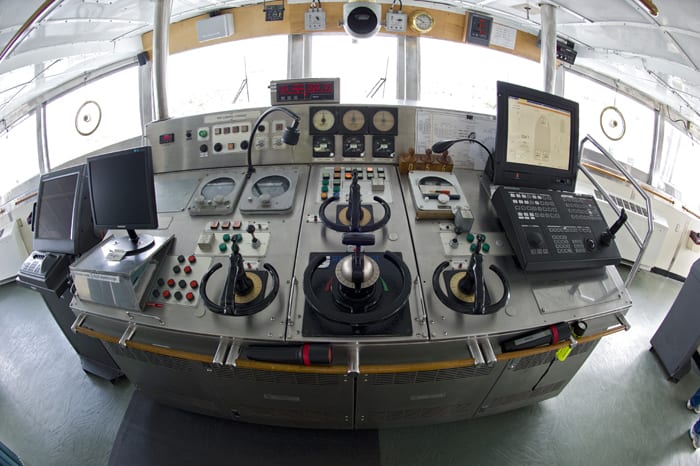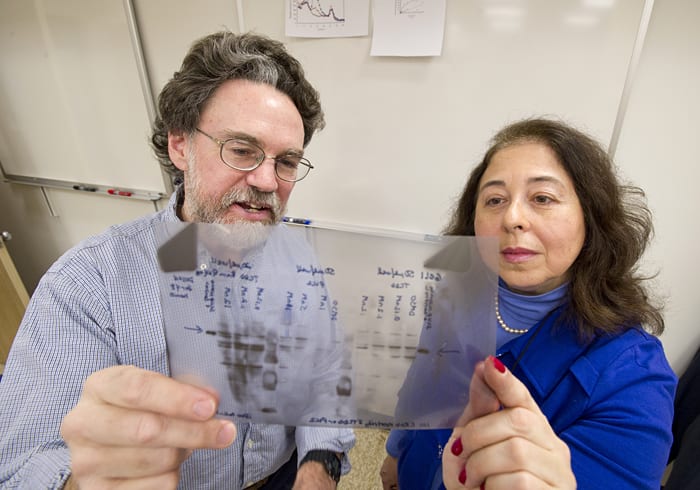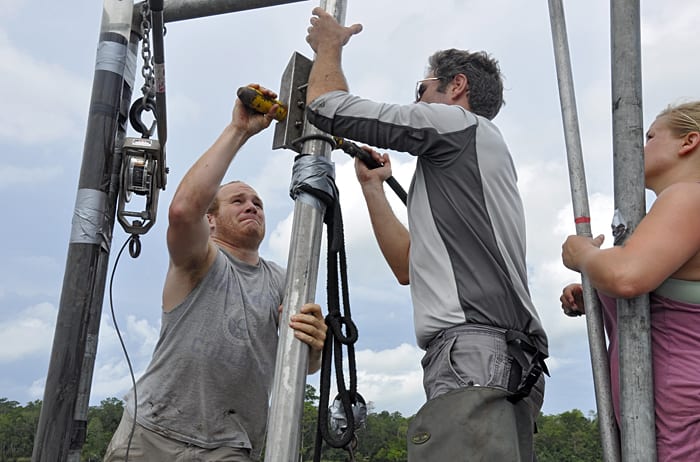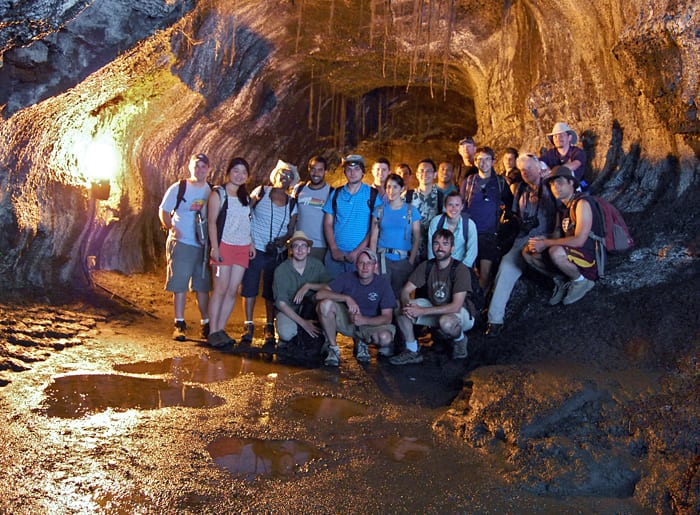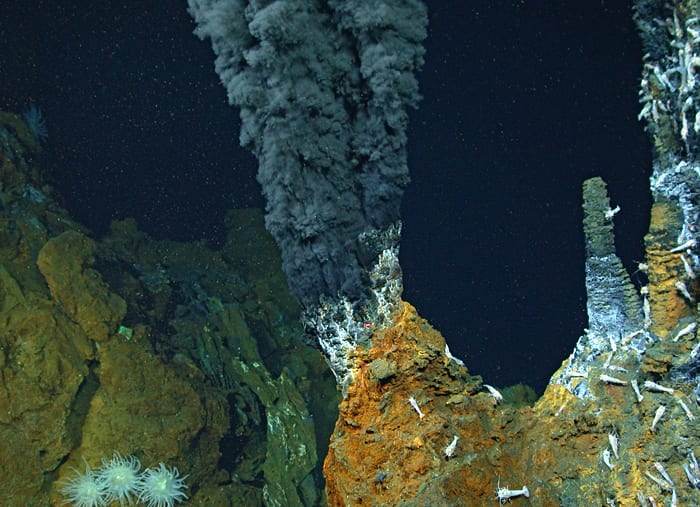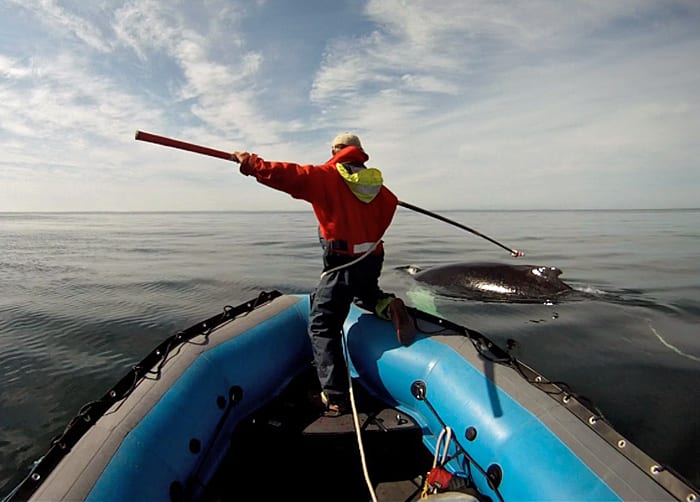Multimedia
Arctic Outpost
This year marked the tenth year of the Beaufort Gyre Exploration Project led by WHOI physical oceanographer Andrey Proshutinsky and Richard Krishfield. Funded by the National Science Foundation, Fisheries and…
Read MoreMemories
WHOI geologist Chris German presents framed photos to R/V Atlantis captain Mitzi Crane, relief chief engineer Jeff Little (left), and relief Boatswain Ed Popowitz (center). The photos were taken during…
Read MoreShifting Sands
Field research often requires improvisation. WHOI scientists Peter Traykovski and Rocky Geyer had planned to use a robotic underwater vehicle in a project to study how tides and currents move sand…
Read MoreFresh Water, for a Change
Oceanographers also occasionally turn their attention to smaller bodies of water. Here, WHOI’s Will Ostrom (right) works on a mooring line on Flathead Lake, Montana. The mooring is one of…
Read MoreA New Way to Make Crust
Scientists have long thought that new ocean crust was only formed at spreading centers, where tectonic plates separate and allow magma to emerge from below. WHOI geophysicist Dan Lizarralde recently…
Read MoreAll in Two Year’s Work
Data from a Nortek DW Aquadopp current monitor is downloaded and analyzed after the instrument spent two years in the Atlantic Ocean south of Greenland, where important subsurface currents cross…
Read MoreWater Flowing Underground
Water flowing through aquifers back to the ocean is part of Earth’s water cycle that people often overlook, said WHOI scientist Matt Charette of the Coastal Groundwater Geochemistry Lab, because…
Read MoreShrinking Home
A polar bear tried (and failed) to scramble onto a too-small ice floe in the Denmark Strait in August 2012 during a cruise led by WHOI physical oceanographer Bob Pickart.…
Read MoreTight Fit
Research vessel Knorr passes through a manmade channel out of St. George’s in Bermuda during a March 2007 expedition to the Northwest Atlantic deep boundary current, lead by WHOI physical…
Read MoreGoing SOLO
Bob Tavares, manager of the WHOI Float Lab, prepares SOLO II floats for an ARGO research mission to explore the structure of currents in the South Atlantic. Each float will…
Read MoreReady to Break Ice
Two red-hulled icebreakers, the Laurence M. Gould (foreground) and the larger Nathaniel B. Palmer, both frequently used by WHOI researchers, docked in Chile between expeditions in spring 2011. WHOI researcher…
Read MoreCurrent State of Things
Engineer George Tupper began designing, building, and maintaining oceanographic instruments in the 1970s, including these current meters on display at WHOI. During his career spent two to three months each year…
Read MoreMeet You Back Here
Leaving research vessel Atlantis behind, R/V Knorr departs WHOI’s dock for two weeks of work on the northeast continental slope of North America. The area, known to oceanographers as Line…
Read MoreSummer of Oceanography
This summer, 32 students from 30 colleges and universities traveled to Cape Cod from the around the United States and four other countries to participate in WHOI’s Summer Student Fellowship.…
Read MoreCalculating Evaporation from the Ocean
Calculating ocean evaporation involves various methods, and considers factors like wind speed, air-sea temperature differences, and humidity.
Read MoreVery Special Delivery
In September, WHOI took delivery of a very special piece of equipment—a redesigned titanium frame for the submersible Alvin. In December 2010, after Alvin was pulled from service, it returned…
Read MoreWelcome to LOSOS
WHOI President and Director Susan Avery joined Willie May, Associate Director for Laboratory Programs and Principal Deputy at the National Institute of Standards and Technology (NIST), in the traditional ribbon-cutting ceremony…
Read MoreBlowing in the Wind
Brown University graduate student Jess Rodysill, guest student Lance Croft, and WHOI researcher Richard Sullivan (left to right) set up an aeolian (wind-blown) sediment trap this summer on Florida’s Santa…
Read MoreThe Driver’s Seat
Though vacant during a September port stop in Woods Hole, at sea the bridge on the research vessel Knorr is occupied around-the-clock by an officer and one of three ship’s mates.…
Read MoreFinding Genetic Keys
Biologists Mark Hahn and Diana Franks were recently funded by the Superfund Research Program of the National Institute of Environmental Health Sciences for five years to research the impact of…
Read MoreCore Effort
WHOI researchers Trevor Harrison (left) and Richard Sullivan push a Vibracore-driven sediment corer into the mud of Basin Bayou on the Florida panhandle, as guest graduate student Jess Rodysill (Brown…
Read MoreInto their Work
In July, MIT/WHOI Joint Program students joined MIT students and WHOI staff for a walked through a lava tube, a natural tunnel that forms under volcanoes, in Hawai’i Volcanoes National…
Read MoreSmoked Shrimp
Deep-sea shrimp thrive at one of the planet’s hottest black smoker hydrothermal vents, where the temperature of expelled fluids measured 400°C (about 750°F). The “smoke” consists of dark, fine-grained particles…
Read MoreYou’re It
MIT-WHOI Joint Program graduate student Julie van der Hoop assisted Rene Swift (above) from the Miller Lab at the University of St. Andrews in tagging humpback whales off Ilse Nue,…
Read More
